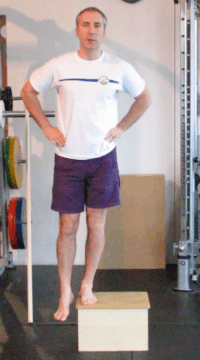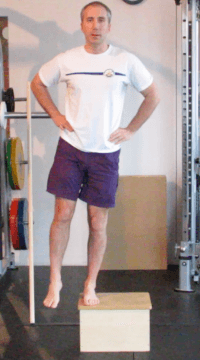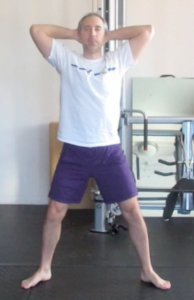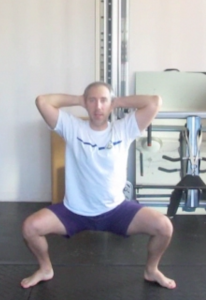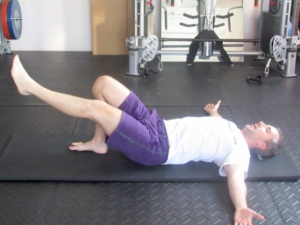Adding Energy Cultivation Movements To Your Workouts
It’s a fact: during your workouts you spend a lot of energy. The more intense the workout the more energy you spend. That’s all well and good when you’re healthy, have your basic needs taken care of, a low stress work environment, are well hydrate and enjoy highly nutritious food every single day.
A large part of the population, however is a little different. Living in a high stressed environment either because of their dollar being spread thinner or work is more hectic with e-mails popping in on their phones along with text messages and heart stopping ring tones. Television shows also only add to the stress and the spending of energy dealing with that newly created stress.
What’s been working really well for my clients is the addition of zone (or energy cultivating) exercises at the end of their workout. It helps you “cool down” and re energize you by calming the nervous system down quickly.
I would highly recommend throwing a few minutes of the Energy Push, Thoracic Mobilizations or Wood Chops at the end of your workouts.
5 Steps To Prepare For CrossFit To Prevent Injury
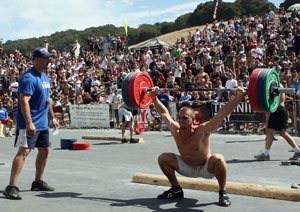 There’s been numerous news stories of cross fit causing physical injuries. Heck YouTube is full of videos depicting the opposite of correct form with Cross Fit “athletes”. What are the pros and cons of CrossFit and how can one physically prepare themselves to avoid injury and risking being out of it for a long time?
There’s been numerous news stories of cross fit causing physical injuries. Heck YouTube is full of videos depicting the opposite of correct form with Cross Fit “athletes”. What are the pros and cons of CrossFit and how can one physically prepare themselves to avoid injury and risking being out of it for a long time?
There are quite a few pros of CrossFit:
a) It’s great for conditioning and pushing yourself to your limits and breaking through them (when done at the level that matches your current abilities)
b) It’s fun! What else is there to say? Throwing weights around and beating your previous best is always a good time.
c) It has an excellent support network. Your peers will cheer you on and support you
d) It uses compound movements (what our bodies were meant to do) working the body through a full range of motion
e) It consistently varies the skilled movements, eliminating boredom and adaptation
The main cons are:
a) Insufficient assessment of the athlete’s abilities. Some trainers are great about this, they have a set number of 1 on 1 sessions which new members must perform before they can join a class
b) Members wanting to increase their intensity before their skill levels are sufficient – so this comes down to good trainers doing their due diligence in prescribing exercises toat match a trainee’s skill level
c) The exercises are explosive and require high level skills, creating a steeper learning curve
d) One size fits all methodology (except for some trainers who do take past injuries, health histories and skill levels into consideration)
Now, let me get to the point of this post. Here are some steps you can take to prepare your body for the highly skilled, power movements that CrossFit uses:
Know where you’re at:
1) Get a full musculoskeletal assessment done – this will correctly arm you with the information about where you stand right now. What your dominant muscles are, what muscles or muscle groups are “sleeping” or “lazy”, what compensates, whether your lumbar, thoracic and cervical spines have the needed range of motion in all three planes to be able to perform explosive movements. This will give you a snapshot of your current abilities and a starting point for what type of corrective exercises you’ll need to be able to perform at your maximal level.
2) Get a postural assessment done – Knowing if your body is aligned correctly will save you endless hours in the gym (it will also save you from pain.) The body has great adaptability and will compensate for sub optimal posture by favouring dominant muscles thereby increasing the severity of the imbalance over time. This is totally under the radar with every day activities. The real problem of an out of balance body begins when you start loading it with weight and complex movement patterns. It compounds when you add high speed, explosive power moves for high repetitions, under fatigue. Sounds like CrossFit matches all of those.
3) Get a movement pattern assessment done – Being able to squat, lunge, bend and so on is great, being able to do all those at the optimal level is where weekend warriors get separated from high level athletes. When you’re loading the bar, hoisting heavy weights overhead, the last thing you want to worry about is dominant quads, unstable pelvis or tight ankles. All of which are indicators of an injury waiting to happen (unless they’re corrected.)
4) Get your nutrition and lifestyle assessed – Since every cell in our body is generated from the foods we eat, our hormone levels are greatly affected by our lifestyle, it would make sense to have a baseline of both our nutrition and lifestyle. In order to recuperate fastest from any type of exercise, we must optimally nourish ourselves. When you work out, you break down muscle tissue. Your body needs protein to repair and regenerate your muscle tissue. It needs high quality fats to regulate hormones (which in turn affect your mood and energy levels.) Carbohydrates are also needed for energy but how much depends greatly on the individual. There are also food sensitivities that might hinder your performance and ability to safely do certain movements. All of this needs to be taken into consideration before you begin CrossFit workouts to prevent possibilities of injuring yourself and being out of the gym for months.
Prepare your body by making it injury proof:
5) Address the imbalances found in the above 4 points, by adhering to a corrective program (4 – 6 weeks depending on findings) that addresses the imbalances, strengthens you, gets you into optimal movement patterns and arms you with nutrition and lifestyle habits you can count on to save you from hurting yourself.
Without taking care of the foundation and thoroughly assessing your current physical abilities, lifestyle and nutrition, you and your CrossFit coach are, at best, guessing what to do. We are all built differently and have different abilities and skill levels, keep that in mind before performing what everyone else is doing.
Have you ever been injured exercises? How long were you out for and what did you do to rehabilitate yourself?
Want A Tight Butt? 3 Simple Exercises You Can Do At Home
Now that the weather is getting warmer here in Toronto (Spring is finally here!) more and more people are peeling away the layers they wore for the last 6 months (although we’ve had an unusually warm winter.) The coats are no longer covering our backsides and I can see more people heading outside to enjoy the sunshine. As a holistic exercise coach and trainer, one of the “curses” of the position is that I see dysfunction easily. Like a car mechanic can tell what’s wrong with a car’s engine just by hearing the different sounds it makes, I can see what muscles are weak and what muscles are overworking just by one’s movement. Lately I’ve noticed an alarming number of dysfunctional hip movements. Most of the time it comes down to weakness of the glutes. It’s like what should be muscles, have turned into wet noodles in people’s pants. No wonder they’re unable to stabilize the pelvis and cause back pain overtime.
The best way to avoid letting your butt sag inside your favourite jeans and setting you up for injury is to strengthen and tone your glutes. Let’s get rid of all the excuses of “I have no time to go to the gym” or “I feel so out of place in a gym” or “Group classes take forever” or “I hate running”. None of that matters. You can do these three exercises in the comfort of your own home.
They require absolutely no preparation or set up. The only equipment you’d need is a chair, a step, or a few books (either will work to get the same effect and result)
Complete them in succession with no rest in-between them. Once you’ve finished one circuit, rest 30 to 60 seconds and do it again. Starting off with 2 circuits will be plenty for the long time out of shape (literally) butt. As it’s starting to shape up, you will want to increase the number of circuits and decrease the rest between them.
Start up with Hip Hikes
1) Hip Hikes
After 12 – 15 reps per side, jump right into Wide Stance Squats with Hands behind your head:
2) Wide Stance Bodyweight Squats with hands behind head
3) Single Leg Supine Hip Extensions
Do these daily for 3 weeks and report back on the firmness of your tush and the increased stability of your pelvis in the comments below.
Does Cardio Need To Be Part Of Your Exercise Routine?
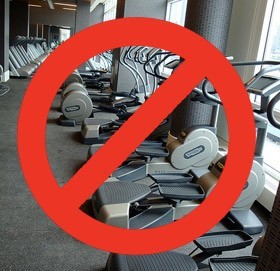 NO!!!!! is the short and sweet (or highly exclaimed) answer. To further qualify that answer, I want you to know that I mean “NO!!!!!!” in response to the long duration, low intensity type of activity most people call cardio. Activities like jogging Continue reading
NO!!!!! is the short and sweet (or highly exclaimed) answer. To further qualify that answer, I want you to know that I mean “NO!!!!!!” in response to the long duration, low intensity type of activity most people call cardio. Activities like jogging Continue reading
How Long Should My Workouts Last?
Without the use of performance enhancing substances (in non politically correct terms: steroids) training longer than 45 – 60 minutes is counterproductive. Studies show that testosterone levels start declining at about 45 minutes. Which means the body goes into a catabolic state (breaks itself down). Going beyond 45 minutes of intense training (with 15 minutes of combined mobilizations, corrective stretching and cool down) could halt or severely slow down strength, hypertrophy (increased muscle size) and fat loss.
To be a little more clear, when I say “training”, I mean resistance training, lifting weights, or doing bodyweight movements (repetitions – reps) for short periods of time (sets) repeated a few times.
In no way am I writing about aerobic training! Aerobic training has too many negative effects for the average person for me to ever recommend it. Unless you’re an athlete whose sport requires endurance training, I’d refrain from training specifically for the aerobic benefits. Even Lance Armstrong (pictured above) greatly benefits from resistance training (kettle bells in this case.)
I’ll avoid going into the details as Charles Poliquin has already written a very informative article about it:
The (Many) Negatives Of Aerobic Training
For the most benefit out of your workouts, keep them under 45 minutes (within 60 including warmups and cool downs,) lift your bodyweight or added weights and avoid sole aerobic training (treadmills, stationary bikes and ellipticals.)



